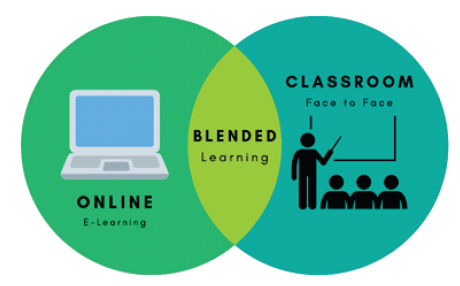Questões de Inglês do ano 2020
Lista completa de Questões de Inglês do ano 2020 para resolução totalmente grátis. Selecione os assuntos no filtro de questões e comece a resolver exercícios.
In view of the sentence: We regret that we visited that city, choose the most appropriate alternative that express regret about the past:
-
A) We wouldnt have visited that city.
B) We wish we hadnt visited that city.
C) We wish we could visit this city more often.
D) We wouldnt visit that city
E) We are going to visit this city
Considering the following sentence, choose the phrasal verb that has the equivalent meaning to what is indicated between parentheses:
The students have been ____________ (To Laze) all the time in class and now complain about their grades.
The students have been ____________ (To Laze) all the time in class and now complain about their grades.
-
A) Nodding off.
B) Pulling through.
C) Cheering up.
D) Springing up.
E) Goofing off.
Select the correct two forms of the verb 'To Forsake according to the order: Past simple - Past Participle.
-
A) Forsook Forsaken.
B) Forsake Forsake.
C) Forsaked Forsaked.
D) Forsaking Forsake.
E) Forsake Forsaken.
Absurdities and enormities are great in proportion to custom or insuetude [being unaccustomed].
Adapted from: Imaginary Conversations and Poems: A Selection, by Walter Savage Landor, 1824.
Choose the accurate meaning of the word ENORMITY:
Adapted from: Imaginary Conversations and Poems: A Selection, by Walter Savage Landor, 1824.
Choose the accurate meaning of the word ENORMITY:
-
A) Immense, enormous.
B) Without limit, immeasurably.
C) Unreasonable, obstructive way to hinder something.
D) To keep the truth hidden from someone for your own advantage.
E) The extreme scale or seriousness of something bad or morally wrong.
Complete the sentence bellow with the correct adverb:
Martha was angry, she looked at Paul ---------.
-
A) Powerful.
B) Pointedly.
C) Pointed.
D) Painted.
E) Point.
Complete correctly: We have been looking forward to a marvellous mountain stroll with a sunny day, but we were disappointed in _________ cases.
-
A) Both.
B) Either.
C) Neither.
D) Nor.
E) Whom.
Utilize the Passive Voice: The song Crazy Little Thing Called Love To Compose) by Freddie Mercury in 1979.
-
A) Is composed.
B) Will compose.
C) Compose.
D) Was composed.
E) Composed.
What is blended learning and how does it work?


Image: https://www.tp.edu.sg/sii/individuals/blended-learning
Blended learning as an approach is not new. Indeed, the practice of combining (blending) different learning approaches and strategies is not new. Distance learning courses have long combined blended learning through a mix of self-access content (print/video/TV/ radio) and face-to-face/telephone support. 'Traditional' courses have always combined (and some still do) a variety of delivery modes that combine content such as lectures, seminars, tutorials, workshops and group work to give learners a range of learning opportunities. And of course, 'good teachers will always use more than one method or approach in their teaching, and good learners will always combine different strategies in their learning' (Marsh, 2012:3*).
So we could say that the term 'blended learning' refers to every time teachers mix different media (e.g. print, audio, and video) with classroom interaction, maximising authentic input in order to support learners' output and skills development. As such, blended learning has more or less always existed, although the term itself is a mere 15 years old at most, and is now understood to mean a rich, supportive learner-centred learning environment where the 'right blend' is synonymous with effective learning (and teaching).
What is new is that today, technology combines all the different media within one environment: online. The online space facilitates learnerlearner interaction, encourages incidental and exploratory learning and allows learners and teachers to stay connected outside the classroom, if they so wish. Learners can benefit from the fact that space and distance do not matter any more. Teachers and educationalists are now understanding more and more that, with the 'right blend', teachers can offer a much richer, supportive learning environment, learning opportunities increase, learning becomes more effective and the learning process becomes more enjoyable.
There are many definitions for blended learning, but they all have the following in common: they refer to two different learning environments face-to-face (synchronous) and online (asynchronous); and they refer to combining those two learning environments in a complementary way to deliver a programme of study so that learners can be supported both within the classroom environment and outside of it. In other words, the term blended learning refers to any programme of study that is delivered by appropriately combining both synchronous interactive study (usually face-to-face) and asynchronous (individual) study (usually online).
We could go further and say, 'It's in the blend!' That is, the key to a successful blended learning approach is to use the strengths of each medium appropriately, combining the two different learning environments in an integrated way so that each medium complements one another: the classroom environment being used for what it does best, such as introducing new topics, explaining important language points or for meaningful communicative activities, and the online environment being used for what it does best, such as preparing for the next topic (by watching a video/reading a text, etc.), and/or practising and consolidating what has been learnt in class or for extra practice. Both modes of delivery put the learner at the centre of the learning process.
(
)
*Marsh, D. Blended Learning:Creating Learning Opportunities for Language Learners. Cambridge: Cambridge University Press, 2012.
(Adapted from: KING, A. Blended language learning: Part of the Cambridge Papers in ELTseries. [pdf] Cambridge: Cambridge University Press, 2016, p. 2.Available st at: http://languageresearch.cambridge.org/cambridge-papers-in-elt Accessed on October 31, 2019).
In the first paragraph of the text, the verb tenses used are:
-
A) Present Simple / Past Simple / Future Simple.
B) Simple Present / Past Perfect / Simple Future.
C) Simple Present / Present Perfect / Simple Future.
D) Simple Past / Present Perfect / Future Perfect.
E) Present Simple / Present Perfect Continuous / Simple Future.


